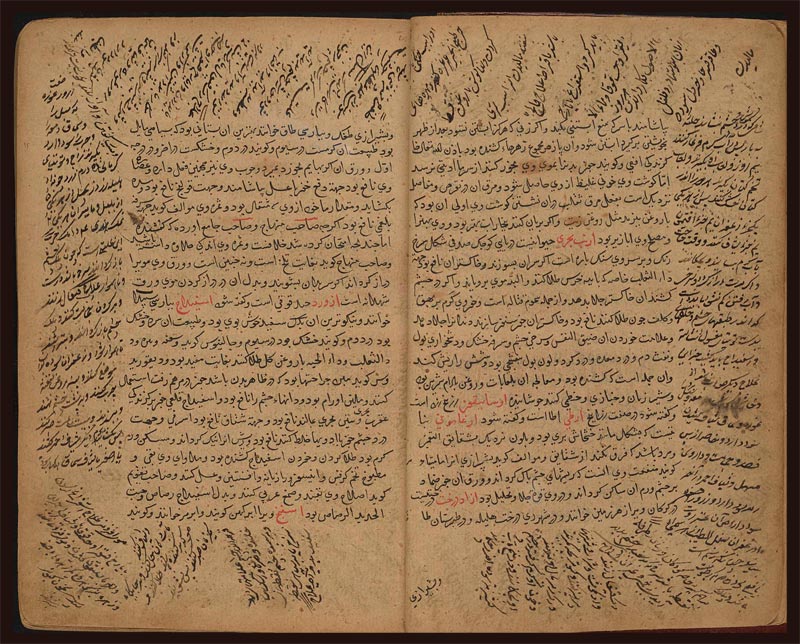This volume carries an early manuscript copy of the first part of Ikhtiyārāt-i Badīʻī, a popular Persian pharmacopoeia authored by the physician ʻAlī ibn al-Ḥusayn al-Anṣārī known as Ḥājjī Zayn al-ʻAṭṭār (d. 1403 or 1404). Ḥājjī Zayn al-ʻAṭṭār was the doctor of the Muẓaffarid prince Shāh Shujāʿ (d. 1384) in Shiraz and composed his pharmacopoeia in 1368 or 1369 for the princess ʻIṣmat al-Dīn Badīʻ al-Jamāl, possibly the wife of Shāh Shujāʿ’s father Mubāriz al-Dīn Muḥammad. The work is divided into two sections, with descriptions of simple drugs listed alphabetically by name in the first section, and descriptions of compound drugs listed in sixteen chapters by type of preparation in the second section. Among the simple drugs described in the opening section are the treatments derived from the sea slug known as arnab baḥrī (literally “sea hare,” after the Latin Lepus marinus) whose ashes are declared useful for alopecia.
Persian Pharmacopoeia
To zoom in, hover over the image with your mouse
al-Mujallad al-awwal ʻan kitāb al-mawsūm bi-Ikhtiyārāt In Persian 1444 Manuscript codex on Persianate paper 260 x 162 mm Isl. Ms. 1060


